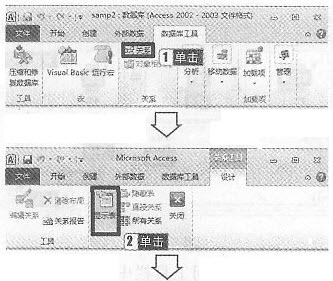问题
问答题
考生文件夹下有一个数据库文件“samp2.accdb”,其中存在已经设计好的2个表对象“tEmployee”和“tGroup”。请按以下要求完成设计。
建立“tGroup”和“tEmployee”两表之间的一对多关系,并实施参照完整性。
答案
参考答案:
步骤1:单击“数据库工具”选项卡下“关系”组中的“关系”按钮,然后单击“显示表”按钮,分别添加表“tGroup”和“tEmployee”,如图所示。关闭“显示表”对话框。

 步骤2:选中表“tGroup”中的“部门编号”字段,拖动到表“tEmployee”的“所属部门”字段,放开鼠标,单击“实施参照完整性”复选框,然后单击“创建”按钮,如图所示。单击快速访问工具栏中的“保存,,按钮
步骤2:选中表“tGroup”中的“部门编号”字段,拖动到表“tEmployee”的“所属部门”字段,放开鼠标,单击“实施参照完整性”复选框,然后单击“创建”按钮,如图所示。单击快速访问工具栏中的“保存,,按钮 ,关闭关系界面。
,关闭关系界面。

